This post may contain affiliate links, which means I’ll receive a commission if you purchase through my links, at no extra cost to you. Please read full disclosure here.
There are two number systems in Korean: Native Korean and Sino-Korean.
Sino-Korean numbers, also known as Hanja numerals are numbers derived from Chinese characters.
Sino-Korean numbers 0-10
| Chinese Character (Hanja) | Sino-Korean Number | Revised Romanization | English | Korean Name |
|---|---|---|---|---|
| 〇 | 공 / 영 | gong / yeong | 0 | 공 / 영 |
| 一 | 일 | il | 1 | 한 일 |
| 二 | 이 | i | 2 | 두 이 |
| 三 | 삼 | sam | 3 | 석 삼 |
| 四 | 사 | sa | 4 | 넉 사 |
| 五 | 오 | o | 5 | 다섯 오 |
| 六 | 육 | yuk | 6 | 여섯 륙 |
| 七 | 칠 | chil | 7 | 일곱 칠 |
| 八 | 팔 | pal | 8 | 여덟 팔 |
| 九 | 구 | gu | 9 | 아홉 구 |
| 十 | 십 | sip | 10 | 열 십 |
*In Korean, there are two terms for zero, “공” (gong) and “영” (yeong), each having its own specific use.
When to use Sino-Korean numbers
Sino-Korean numbers are used for:
- Phone numbers
- Pin numbers
- Addresses
- Time (minutes, seconds)
- Dates (months, years, centuries)
- Money
- Measurement (length, weight, height, temperature)
- Counting above 100









